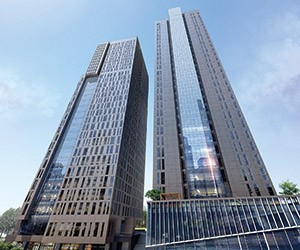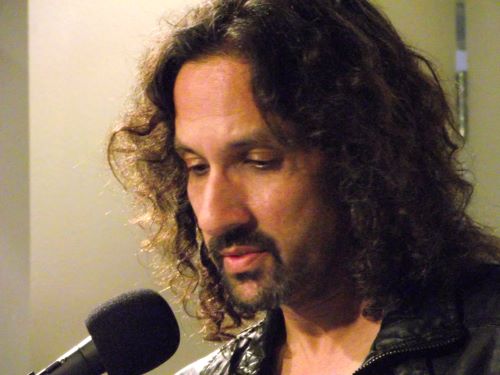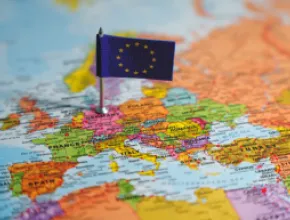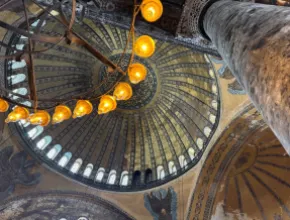The effortless ways in which Seoul embroiders the threads of old and new are easily manifested in its meetings business. At many levels, the Korean capital is on the rise, with brand-new properties and sparkling-fresh ideas, but that doesn’t prevent planners from slithering away into back alleys a thousand years old for a business event. Which is exactly how Meetings Focus recently experienced the city.
As a fashionable, stately centerpiece of Seoul business travel, the Lotte Hotel was originally the first commercial property of its kind in Korea. The main wing of the current building opened in 1979. Nowadays, one finds 1,161 sleeping rooms and a lavish executive club area on the 34th floor lined with hundreds of books. The club area offers panoramic views of a gargantuan cityscape, including the Samsung Building and City Hall directly across the street.
Seemingly every skyscraper right outside comes with an exterior display screen. At every juncture of the Lotte, Meetings Focus encountered academics, petroleum engineers, association executives and convention attendees from all over the world, especially the U.S. and eastern and Central Asia. In short, the conference and convention scene here is blossoming.
As a brand, Lotte Hotels & Resorts, the largest hotel group in Korea, is also on the rise, with 10 more properties currently under construction throughout Asia or Europe. The company plans to have 40 properties by 2018 and 200 by 2030. Another Seoul property, Lotte World Tower, a staggering 123-floor, 1,824-foot-tall complex scheduled to open in 2016, will include a deluxe hotel, residences and retail. But the current headquarters property is the city’s classic accommodation for meetings business. Even though it’s a business property per se, one feels steeped in tradition just being there.
“The history of Korea can be told through this hotel,” says Maureen Crowley, a decades-long tourism professional, adding that 50 percent of the people she knows in Korea have some sort of American connection. “It’s the most USA-friendly nation anywhere in Asia.”
Shortly thereafter, Greta Kotler, chief global development officer for ASAE, joined our group in the Plaza Hotel, another Korean-owned property, and one that allows anyone to actually purchase the line of furniture in the rooms. On her way to give a presentation at the 2014 UIA Associations Round Table, Kotler gave us the lowdown on ASAE’s Seoul operation. A few years back, she discovered that many people in Seoul were already calling themselves association professionals, but had no formal way to learn association management skills, so ASAE opened an office there three years ago.
PageBreak
“There was a cadre of people who identified themselves that way,” Kotler says. “So it was a model we found to be compatible.”
Along with Beijing, Seoul is one of only two ASAE command centers outside the U.S., which serves as a further indicator that the meetings and conventions business is booking here, according to Kotler.
Convening With COEX
Even at the Coex Convention and Exhibition Center (COEX), Seoul’s definitive megacity in and of itself, emergent components tended to surround us as we perused the grounds for a few hours. To begin with, COEX defies any categorization. The complex includes three 5-star hotels, Asia’s largest shopping mall, three multinational office skyscrapers, two theaters, world-beating IT and mobile infrastructure, plus the city’s only airport terminal, where delegates traveling on Korean Air and Singapore Air can check in, drop their bags and get processed through immigration before traveling to the main airport at Incheon. Over 2,000 conferences and 200 exhibitions unfold there each year, smack dab in the district that was made an international sensation following that viral YouTube video from a few years back.
And it doesn’t stop there. As Meetings Focus waltzed around COEX in the footsteps of world leaders who were recently here for a nuclear security summit, our guide told us that even more projects lurk just around the corner. In one instance, a fourth hotel should be finished by 2020.
Part of the COEX experience involves the underground shopping mall, accessible by elevator from anywhere in the complex. That is, at any time, from any location, on any floor, convention delegates can break out from a meeting and descend to the mall for coffee, tea, electronics, tailor shops or any one of 250 retail spaces, including the Kimchi Museum.
As we concluded our COEX experience, Meetings Focus looked right across the roadway to the century-old Bongeunsa Buddhist temple. When designing a program at COEX, we were told, planners can incorporate any of the temple’s offerings, including a tea ceremony, a lantern festival or even a temple stayover—another instance of old meeting new.
PageBreak
Outside the Box
Polar opposite from the convention megacity experience, the neighborhoods of Seoul cannot be excluded from any planner’s drawing board.
For example, Insadong, Seoul’s most famous destination for tourists and business escapees alike, presents a labyrinth of artisan shops and local restaurants along ultra-narrow alleys. Galleries, tea museums, fabric shops, gardens and a wide variety of tiny off-site locales for small corporate groups abound.
Many of the alleys here are so narrow they can only accommodate a few people standing abreast, but some of Seoul’s best food is here, for cheap. As we navigated the labyrinth, businessmen and groups surrounded us wherever we went.
What’s more, in the streets of Seoul’s Central Business District, within walking distance of many major hotels, including the Lotte, is a plethora of street food and outdoor shopping that occupy a few square miles, all year-round. We discovered the Namdaemun Market without even looking for it. The market first emerged in 1414, during the Joseon Dynasty, and now offers everything under the sun, often at dirt-cheap prices directly from the manufacturers.
Myeong-dong, on the other hand, is situated right smack in the middle of a massive business and banking area. As a result, its mixture of high-end shopping, street food and basic goods tends to attract hundreds of thousands of folks daily. Outdoor street activity rules the nighttime atmosphere.
Back in business mode, deep inside the JW Marriott Seoul, amid Gensler-designed decor, a handful of PCOs and DMCs gave us the lowdown on the Seoul MICE Alliance, a partnership between government agencies and private-sector organizations. Crowley told us the blossoming alliance now features over 150 stakeholders and over 2,000 trained students, all of whom are eager to interface with business from the U.S. She repeats that Seoul is the most American-friendly place in Asia.
“There’s not a day that goes by that I don’t drive in a taxi and someone isn’t wearing a Yankees cap, or the Giants,” Crowley says. “There’s an American connection here that people will find welcoming.”
Gary Singh has traveled to almost every major Asian capital, but this time he found a ready-made Seoul.







